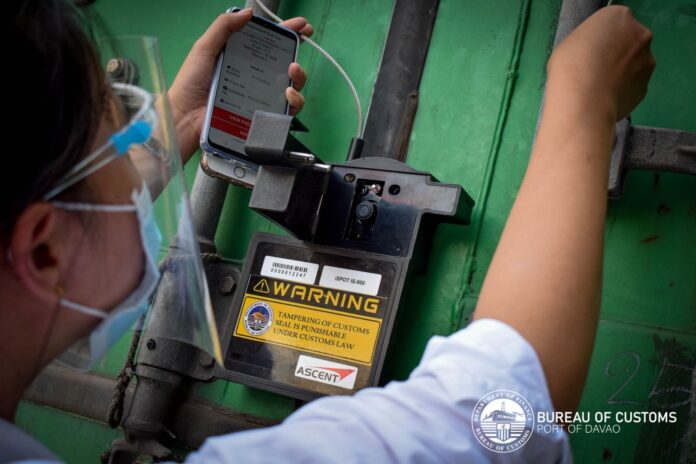-
The Bureau of Customs will implement starting March 1 the Electronic Tracking of Containerized Cargoes System for import and export shipments in Davao and Cagayan de Oro economic zones
-
Customs officers will not approve any import or export single administrative document without the required E-TRACC booking
-
Web-based E-TRACC allows BOC to track, monitor, and audit the location and condition of cargoes, as well as obtain real-time alarms on diversion and tampering of cargoes
Starting March 1, the Bureau of Customs (BOC) will implement its Electronic Tracking of Containerized Cargoes (E-TRACC) System for all import and export shipments in economic zones in Davao and Cagayan de Oro, the bureau said.
Assessment and Operations Coordinating Group (AOCG) Memo No. 44-2022 issued by BOC said full implementation of the system by March will cover the following ecozones:
Cagayan de Oro Port – exports
- Balo-I Agro Industrial Economic Zone
- Bukidnon Agro-Resources Export Zone
- CIIF Agro Industrial Park
- Jasaan Misamis Oriental Special Economic Zone
- Philippine Packing Agricultural Export Processing Zone
- Phividec Industrial Estate
- Jacobi Carbons Philippines Inc.
- Taganito Special Economic Zone
Davao Port – imports and exports
- Anflo Industrial Estate
- Darong Agri-Development Corp.
- AJMR Agro-Industrial Economic Zone
- Other Philippine Economic Zone Authority (PEZA)/free zones in Davao
All export containers from the covered ecozones should adhere to AOCG Memo No. 493-2021, which provides guidelines for the implementation of E-TRACC exports in ecozones, BOC said.
All import transactions, meanwhile, should adhere to AOCG Memo No. 168-2020, which provides the amended E-TRACC guidelines for PEZA imports, the bureau said.
AOCG Memo 44-2022 states that BOC examiners/appraisers or any authorized customs officers responsible for processing import or export clearances will not approve any import or export single administrative document without the required E-TRACC booking, as prescribed by Customs Memorandum Order No. 04-2020, which implements the system.
E-TRACC is a Web-based system launched in 2020 to track the inland movement of containerized cargoes during transit and transfer to other customs territories and facilities. It allows BOC to track, monitor, and audit the location and condition of cargoes, as well as obtain real-time alarms on diversion and tampering of cargoes.
READ: BOC orders e-tracking of cargoes in transit
Several memos have been issued since 2020 on the gradual inclusion into the system of various ecozones, free ports and collection districts and, for imports, inter-island shipments, and customs bonded warehouses (CBW). In August 2021, BOC also held a public consultation on the proposed implementation of E-TRACC in all airports of entry.
Under CMO 04-2020, an electronic customs seal (ECS) is required during the transfer of cargo to a container yard/container freight station or other customs facilities and warehouses; transit of cargo bound for free zones, inland customs offices, depots, or terminals; transit to CBWs; export of cargo from free zones, inland customs offices, depots or terminals and CBWs to port of loading; and transfer of shipments subject to further verification or monitoring.
BOC said the trackers, or the ECS, are designed to emit an alert on any tampering to allow BOC’s Enforcement and Security Service Quick Reaction Team to act swiftly to prevent any smuggling activities.
All container vans covered by CMO 04-2020 should be affixed with an ECS before being cleared to depart from the starting point or point of discharge for the voyage to the end point or point of destination.
Except when warranted under CMO 04-2020, customs cargo clearance must be fully completed before any shipment can be sealed with an ECS, the bureau said.
Booking for an E-TRACC trip can be made one day early or up to one hour before departure of the container.
E-TRACC requires payment of P500 within a 10-km radius from the port of discharge and P700 beyond the 10-km radius from the port of discharge. The charge covers both arming and disarming of the ECS. – Roumina Pablo





